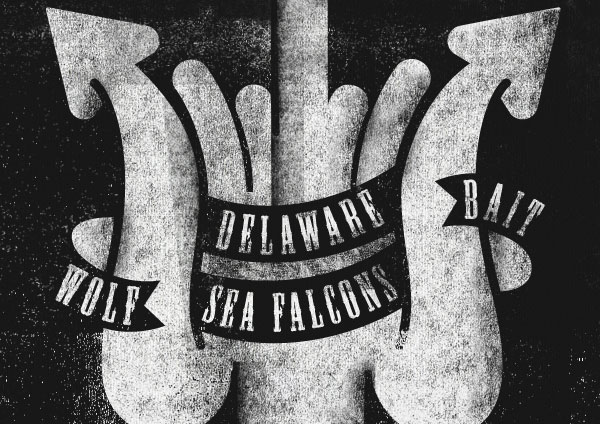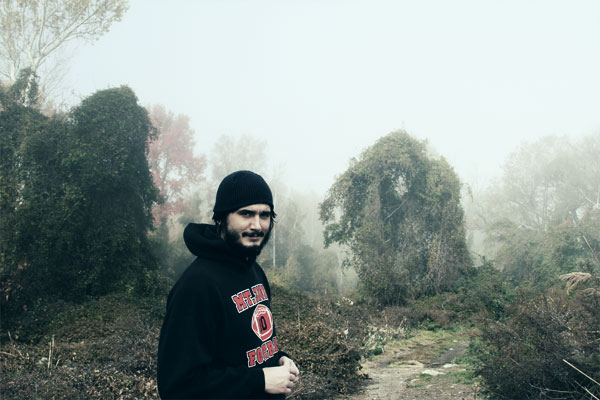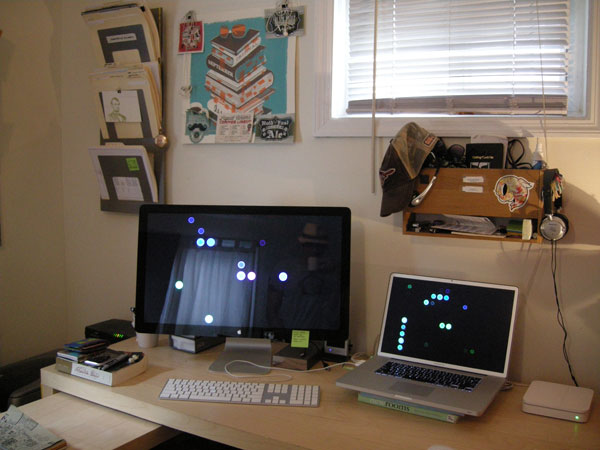One Minute With…
Bennie Kirksey Wells

Hi Kirk, thanks for taking time to chat with One Minute With. Tell us a little bit about yourself and your work.
Thanks for having me. I am very honored.
Lets see, well my full name is Bennie Kirksey Wells but most people call me Kirk, with the exception of strangers and good friends who either call me Bennie or Kirksey. Occasionally I get “chicken” but that’s another story. I currently live on City Island in the Bronx but I’m originally from Riverdale, Georgia. I played football at the University of Florida where I graduated with a degree in graphic design in 2002. I brew beer in my basement and have the smallest closet on the eastern seaboard.
Walk us through a typical day in the life of Bennie Kirksey Wells.
Most mornings I try to wake up early, around 6 am. I make my first pot of coffee and read for a couple of hours, usually about one of the presidents (I’m currently on Franklin Pierce). Then I make a to do list, queue up some Twilight Zone episodes to listen to while I work and sign on to IM. I work remotely for a place in Atlanta, so I stay in touch with them throughout the day via email and IM. About noon I fire up the second pot of coffee and eat at my desk. When 5:30 rolls around I start to wind things down and close out for the day. Then, depending on the weather I try to go get in a pick-up basketball game or two at the park, or maybe go for a run. When I get back heat up the leftover coffee and get started on any freelance projects I might have to work on and usually get to bed sometime around 11 or so.

How did you get into design? Was there a defining point in your career, and if so, how did it shape you as a designer?
I liked to draw a lot as a kid, and my parents were very supportive of that interest. In middle school my drawings started moving away from still-life sneakers and ninja turtles to words and letters, especially lowercase “g” for some reason. I just thought it all fell under the label of ART. In high school I visited the University of Florida on a recruiting visit and talked with Maria Rogal, a professor for the graphic design program. I was sold. I wanted to be a designer.
Defining moment. That’s a tough one. Maybe moving to Austin in 2009 to try my hand at design in the Lone Star State and falling absolutely on my face. I don’t know what I expected to happen, but I was not prepared for the difficulty in trying to break into the Austin design market. There are some awesomely creative people down there combined with the fact that it’s a great place to live, so the job market was rough. Going jobless for 6 months was a sort of wake-up call for me. I got motivated and began cranking out projects. I re-worked my portfolio and adopted a new philosophy of not letting the absence of a client prevent me from making cool stuff.
How do you approach a new project? What’s your creative process like?
Research, sketch, re-sketch, start over, beer, sketch, freak out, push though, hate the result, more beer, slowly come to love it and finally resent myself for my own vanity.

You work in a variety of fields, from logo design, to print, to illustration, and so on. If you could only do one of these for the rest of your career, which would it be, and why?
Illustration. Definitely. I mean, it would break my heart to have to choose one, but I don’t think I’ve gone a week of my life since the age of 10 without doodling, drawing, sketching something. My style has really evolved over the years and I’d be very interested to see where it would go with 20 years of dedicated illustration focus.

Your work has a very retro feel, with lots of geometrical elements, and perhaps a dash of David Carson thrown in for good measure. Where do you get inspiration?
Ha ha. Well, if I’m at all honest, I was a bit of a Carson fan back in college. Then I moved away from that and became a little obsessed with Charles Spencer Anderson. I am mildly embarrassed about my affinity for David Carson’s work and I’m not sure why. But yeah, retro would accurately describe my aesthetic I’d say. The house in Georgia in which I grew up was a shrine to late 60s early 70s kitsch. A different color of shag carpeting in every room, hallways covered in half wood-panel and half peeling wallpaper with disturbing paintings of owls and deer in heavy wood frames lurking around every corner. What seems retro to others just feels like home to me.

If, in some Freaky Friday-like situation, you could live the life of another designer, illustrator or creative, for a day, who would it be, and why?
Chris Ware, if only to be in his workspace for 24 hours. I don’t understand how he creates the things he does, especially with the amount of detail and precision he’s known for, but I’d love to see where he works and how he comes up with stuff.
What design tools could you not live without?
Sketchbook. I take than thing to the bathroom with me. Uniball vision pens, mechanical pencil and fat erasers. And I guess Adobe Illustrator, Photoshop and InDesign. The typical designer tools.

And finally, what tips would you give to anybody who is looking to get started in design?
That’s a tough one. I honestly don’t think I’ve been designing long enough to qualify for passing on pearls of wisdom. Maybe the only advice I would give is to not be limited by the work you are able to get at first. I think a lot of talented young designers beat their heads against the wall trying to get the dream project or attempting to land a gig at the most amazing firm out there. Of all the design there is to do out there, most of it’s shit. It’d be nice to think that every other gig is going to be a show poster for a band called Titties and Dynamite or an awesome information graphic about Bill Murray’s personal grooming habits or a great interactive site for antibacterial fungal cream, but they’re not. It’s 50 Powerpoint slides, a banner ad and a couple dozen one-hour logos that you’ll hate. At least, that’s been my experience. So I guess the point is not to wait until Titties and Dynamite comes knocking, if you wanna make a poster featuring a Polar bear Lifeguard drinking lighter fluid; do it. Design that info-graphic for all the places you’ve vomited in the continental U.S. Those are the projects that you’ll try your hardest at, and that will ultimately make you better. You need clients to pay the rent, but you don’t necessarily need one to make good work.